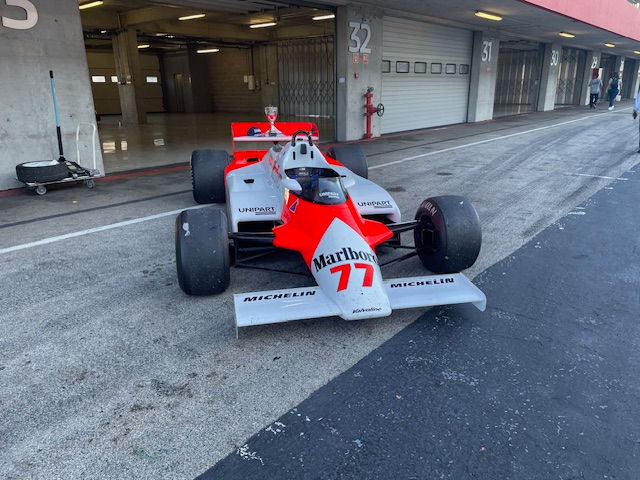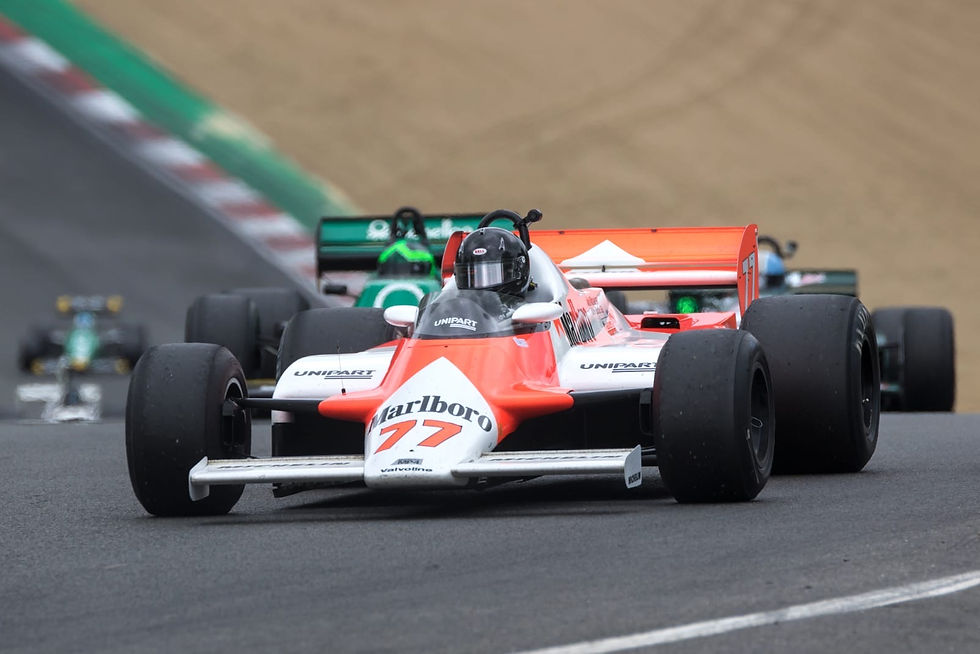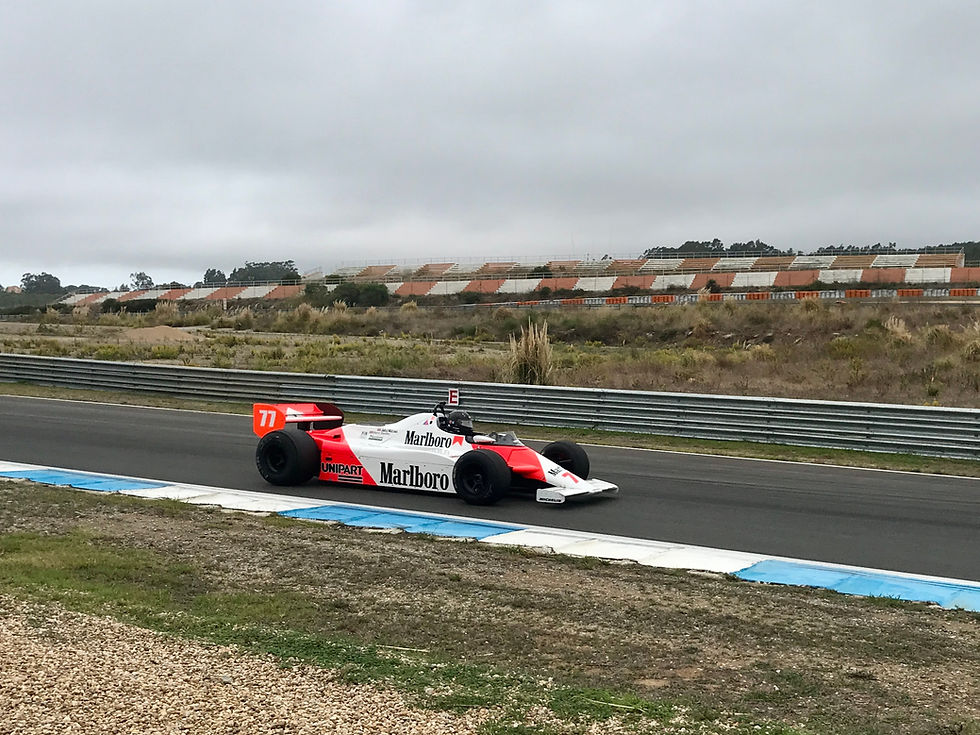McLaren MP4: The Car That Changed Motorsport History at Estoril Classics
- historicendurance
- Sep 19
- 3 min read

Estoril Classics returns to the Autodromo do Estoril on 3, 4 and 5 October 2025, promising an unforgettable weekend for all motorsport enthusiasts.
One of the most eagerly awaited moments will be the appearance on track of the legendary McLaren MP4/1, the first Formula 1 car with a fully carbon fibre monocoque chassis, which will compete in the Classic GP driven by Britain’s Steve Hartley.
The car that changed Formula 1 will not just be a museum piece: it will be a true protagonist in full competition, part of a grid of 26 Formula 1 single-seaters that will recreate the excitement of the 1970s and 1980s – a unique opportunity.
The MP4/1 was created for the 1981 season from a visionary idea by John Barnard, who had an epiphany when visiting British Aerospace and seeing technicians working with carbon fibre panels for aviation. If the material was light and strong enough to fly, it could also protect a Formula 1 driver.

From this idea was born the concept of a “sandwich” monocoque, with aluminium panels in a honeycomb structure between layers of carbon fibre oriented to withstand extreme loads. The result was a chassis that was lighter, stiffer, and incomparably safer. But turning this vision into reality required courage. Many British companies refused to manufacture the chassis, considering the project far too risky.
It was then that Barnard and Ron Dennis crossed the Atlantic and found a willing partner in Hercules Aerospace, in the United States, ready to take on the challenge. The first monocoques were produced on American soil, cured in high-pressure autoclaves, and sent to McLaren’s headquarters, which still lacked the facilities to build a carbon chassis in-house.
The ultimate validation came at Monza in 1981. John Watson suffered a violent accident at the Lesmo corners; the car broke apart, engine and gearbox were ripped away, yet the monocoque remained intact. The Irishman emerged unscathed. From that moment, the sceptics were silenced and the revolution was complete.

Over three seasons, the MP4/1 proved to be not only groundbreaking but also highly competitive, securing six Grand Prix victories, including the legendary Long Beach race in 1983, where Watson claimed victory starting from one of the back rows. Also driven by Andrea de Cesaris and Niki Lauda, the MP4/1 was the turning point that put McLaren on the path to excellence and paved the way for the era of dominance that followed.
Seeing this car in action at Estoril carries a special significance. The Portuguese circuit has been the stage for unforgettable Formula 1 moments linked to this model. In 1984, Niki Lauda clinched his third World Championship by just half a point in the McLaren MP4/2 TAG, a direct descendant of the MP4/1. In 1987, Alain Prost broke Jackie Stewart’s record for Grand Prix wins with his 28th victory, driving the McLaren MP4/3 TAG, which shared the same design principles as the MP4/1. In 2025, the Classic GP will bring these memories back, with qualifying on Friday afternoon, a race on Saturday, and another on Sunday, recreating the vibrant atmosphere of a Grand Prix weekend.
As if that weren’t enough, the weekend will also celebrate the 75th anniversary of the Formula 1 cars, with single-seaters representing every decade of the sport. The sound, the smell, the feel of the machines that made history will be right there for the fans. It will be more than a celebration; it will be a journey through time.
Entry to the main straight grandstand will be free, but paddock access is limited. Tickets have been on sale online since 25 July and remain available until 23:59 on 2 October. Over the past three years, demand has been so high that most tickets sold out before the event; nevertheless, any remaining tickets will be available at the Estoril Circuit box office on 3, 4 and 5 October, from 09:00 to 18:00.
To provide fans with a close-up experience of the drivers and the behind-the-scenes action, paddock tickets come in different options: €20 for Friday, €35 for Saturday or Sunday, and €60 for a three-day pass. These tickets grant access to restricted paddock areas, allowing fans to see the cars being prepared and immerse themselves in the unique atmosphere of the event. Children up to 15 years old can enter the paddock free of charge if accompanied by an adult with a valid ticket.





Comments